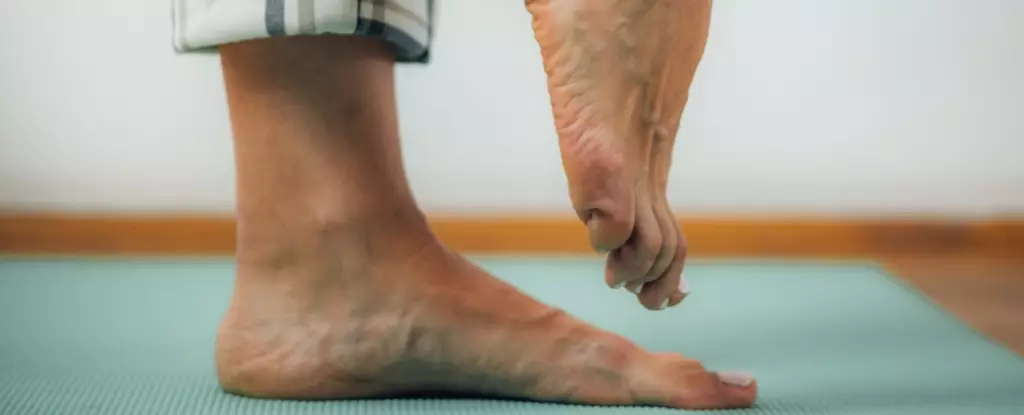In recent years, social media has birthed a series of unusual challenges that claim to reveal our physical prowess while highlighting how we age. From standing up off the floor without using hands to the current craze of balancing on one leg while brushing your teeth, these odd self-tests have taken the world by storm. Yet, as whimsical as they may be, they invite an essential question: Do these tests genuinely offer insight into our aging process?
Aging gracefully isn’t simply about holding onto our youth or boasting athletic agility. It encompasses a rich complexity that interweaves the physical, the mental, and even the social realms of our existence. To grasp what it means to age well, we must look beyond mere strength or the speed at which we walk. Instead, we should evaluate our overall sense of well-being, which includes both our ability to find joy in life (hedonic well-being) as well as a deeper sense of purpose (eudaimonic well-being).
Walking Speed: Is It Really the Benchmark?
While walking speed is a commonly used indicator of physical decline, equating it directly with a person’s quality of life is overly simplistic. Research has shown that individuals who walk faster than 1.32 meters per second are statistically less likely to succumb within a three-year span, underpinning the humorous notion that they are “too fast for the Grim Reaper.” However, a slowing gait—below 0.8 meters per second—may signify conditions like sarcopenia, marked by decreased muscle mass and overall physical decline.
Yet, the irony is glaring: these metrics often require specialized tools that many of us do not have access to in our homes. While a healthcare provider may use a grip-strength dynamometer to assess muscle functionality, not everyone can seek such equipment. Instead, simpler home tests like standing up and sitting down repeatedly can shed light on one’s physical vitality, making it more feasible for individuals to monitor their health without professional assistance.
Delving Deeper: Beyond Physical Indicators
In our quest to gauge how well we are aging, it’s crucial to embrace a broader view that encompasses mental and emotional health. Maintaining cognitive fitness—exemplified through memory retention, attention span, and mental flexibility—is equally vital. A series of straightforward cognitive tests can provide insight into your mental agility without needing to leave your living room.
For instance, the trail-making test, where individuals must connect numbers and letters in a prescribed sequence, challenges your ability to shift focus efficiently. The Stroop test, meanwhile, assesses your capacity to disregard irrelevant information—an essential skill for managing life’s myriad distractions. Lastly, the dual-task challenge of walking while counting backward from a high number amplifies the demand on cognitive resources, allowing you to evaluate cognitive flexibility dynamically.
These tests are fun and informative, but they raise an obvious issue. How do we ascertain whether we’re genuinely progressing? Unlike physical exercises that often yield visible improvements, the brain’s adaptations tend to evolve more subtly and less predictably. This is why regular check-ins with yourself, conducting these tests intermittently, can offer illuminating insights into your cognitive progression.
The Puzzle of Aging: A Multifaceted Approach
It’s misleading to believe that one particular test encapsulates the essence of how well we are aging. A true understanding resembles a jigsaw puzzle, with each piece representing various facets—physical health, mental agility, emotional well-being, and social connections. Each interaction affects the others, yielding a more extensive portrayal of our overall health.
Moreover, while current performance is revealing, it offers little assurance about future changes. Life is dynamic, and uncontrollable factors can disrupt even the healthiest lifestyles. The weight of your test scores may not measure happiness or sense of fulfillment thoroughly. Therefore, it’s paramount to regularly evaluate your emotional state alongside physical and cognitive assessments to gauge the overall quality of your life.
The True Measure of Well-Being
Ultimately, the most telling signs of aging gracefully aren’t framed by the ability to perform a physical feat or score highly on a cognitive test—they’re wrapped up in how you perceive your life’s journey. Are you connected to loved ones? Do you feel joyful and engaged with your daily experiences? Instruments like the Scale of Positive and Negative Experience can effectively quantify these feelings, giving insight into both the delightful highs of life and those more challenging lows.
Aging isn’t merely about striving for speed or competition; it revolves around understanding who you are—embracing your body, nurturing your mind, and fostering connections with others. By making small, intentional adjustments to your lifestyle and focusing on holistic health, one can cultivate a nuanced approach to aging. So while standing on one leg may be a fun challenge, neither it nor any single test can encapsulate the vibrancy of your life’s tapestry.

